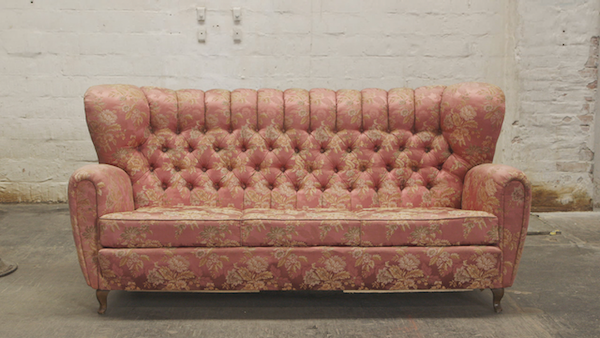Movie review by Greg Carlson
Ruth Beckermann’s “Mutzenbacher” invites viewers to consider the traditional dynamics of the erotic novel – and subsequent filmic depictions of eroticism – by rearranging the visual furniture most closely associated with the voyeuristic gaze privileging the straight, white, male producer/consumer. The filmmaker uses “Josephine Mutzenbacher or, The Story of a Viennese Whore as Told by Herself,” the anonymously-published 1906 book, as a vehicle to explore sexuality, masculinity, taboo, power, and fantasy. Beckermann invites roughly 100 men, age 16 to 99, to “audition” for a film by reading aloud several graphic excerpts as solo performers or in pairs and small groups.
The tactic initially mirrors the longstanding custom of the humiliating “cattle call” tryout in which young women are brutally judged as much for their physical appearance as for their acting ability (see charged examples in “Showgirls,” “Girl 6,” “Always Shine,” “Mulholland Dr.” and many others). Beckermann, who we hear interacting with her subjects from behind the camera, does not ask the participants to undress, but many other elements receive sharp deconstruction. As Charles Bramesco shrewdly observes, “Every aspect of the process, from the forced-femme narration fostering identification across gender lines to the subjugated approval-seeking recalling anxious starlets, has been calibrated to undercut macho impulses so that we might explore what lies beneath.”
At one time attributed to Arthur Schniztler and later credited to “Bambi” author Felix Salten, “Josephine Mutzenbacher” recounts the debauched carnal education of the title character as she looks back from middle age to her life from 5 to 13, the period before she finds employment as a prostitute. Beckermann stages her interviews in a former coffin factory, frequently emphasizing a sofa covered in a pinkish floral motif as a triple reminder of source material, Freudian psychoanalysis, and casting couch. Viewers unfamiliar with the novel are brought up to speed through the fascinating exchanges that Beckermann shares with the colorful parade of curious and aspiring performers.
Since at least 1970, more than a dozen film versions inspired by “Josephine Mutzenbacher” have been produced, along with live cabaret adaptations, parodies, and audiobook recordings. As Beckermann points out through the on-camera interviews that preface several of the conversations included in her film, the story is well-known to native German speakers, equally as famous as Cleland’s “Memoirs of a Woman of Pleasure” (1748) is in the English language realm. Leopold von Sacher-Masoch’s “Venus in Furs” (1870) and several of Sade’s writings boast broader recognition. The latter’s works had a clear influence on the author of “Josephine Mutzenbacher.”
Beckermann teases all manner of responses from her interview subjects. Some lean into the most salacious and disturbing content, lamenting what they perceive as our current era’s more conservative moral climate. Others squirm in embarrassment or discomfort at the ribald prose. The filmmaker frequently uses the readings as a starting point from which to probe the personal histories and moral beliefs of the volunteers. The cumulative effect of Beckermann’s men-only conceit ultimately directs viewers to reframe aspects of identification with others, as the readers narrate the action via the first-person perspective from which they recite.
